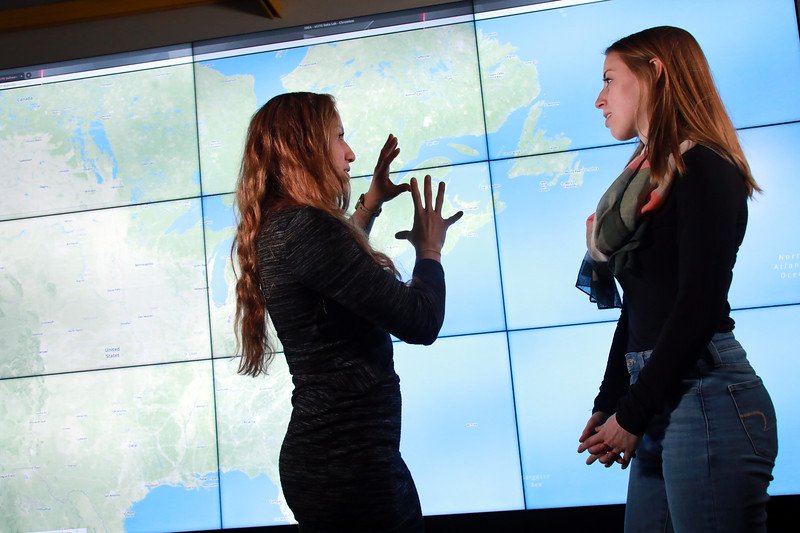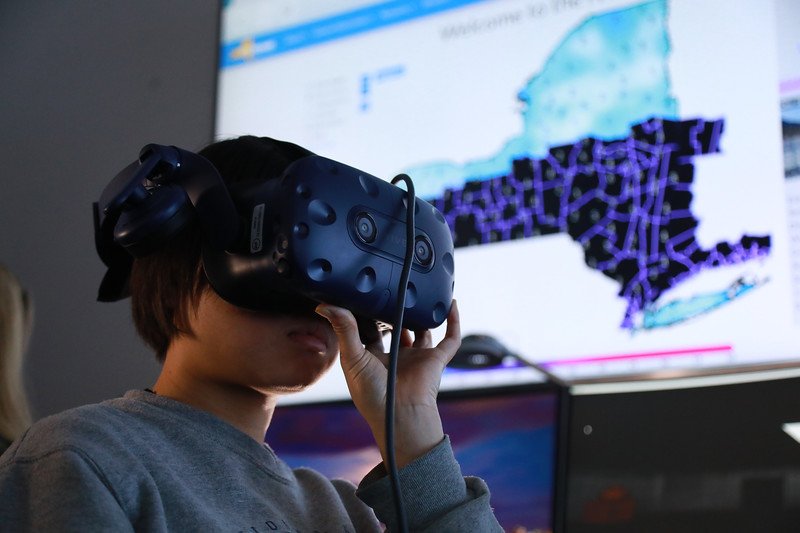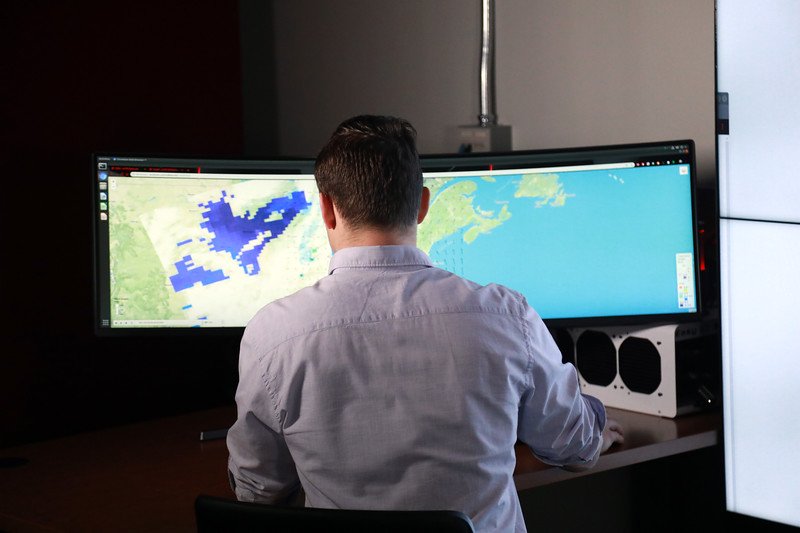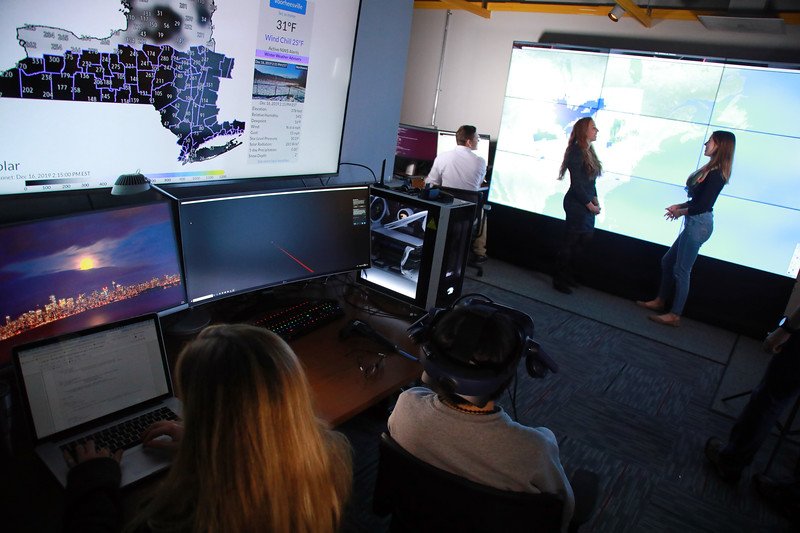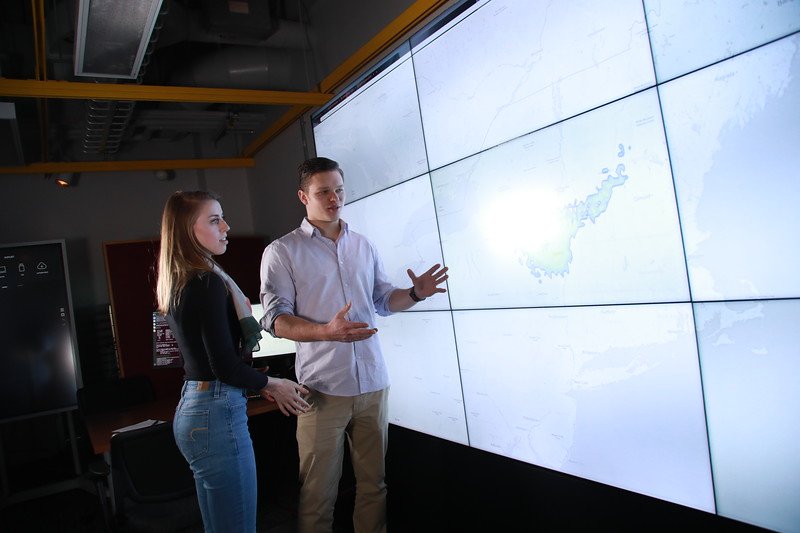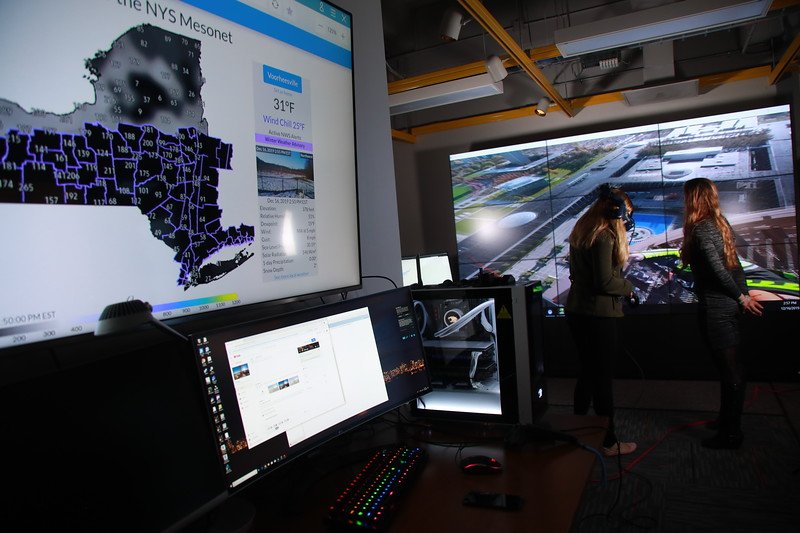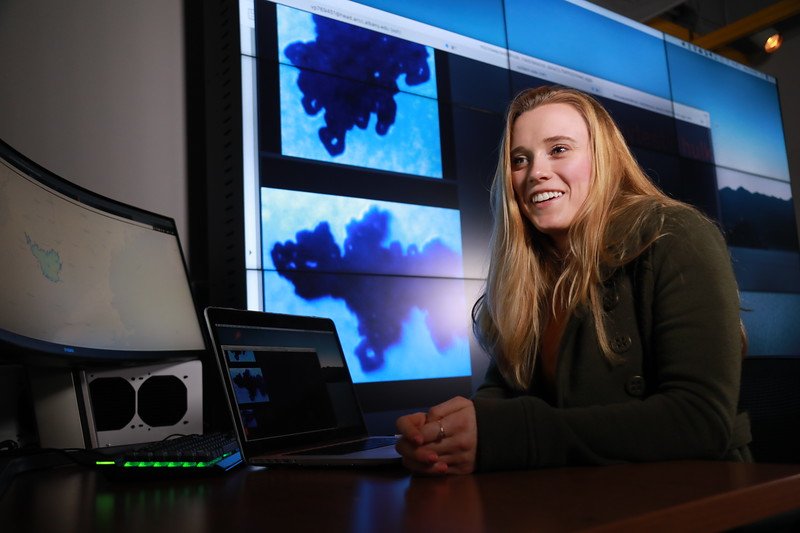A Look Inside the xCITE Laboratory
ALBANY, N.Y. (Jan. 28, 2020) – Tucked into a converted office space at the Atmospheric Sciences Research Center (ASRC), Kara Sulia and Arnoldas Kurbanovas are helping scientists better visualize and communicate their story.
The two lead operations at the xCITE (ExTREME Collaboration, Innovation, & TEchnology) laboratory, a state-of-the-art data and visual analytics center that is connecting atmospheric science research and applications with emerging technologies – such as artificial intelligence (A.I.) and machine learning, data analytics, virtual reality, and application development.
“There’s a gap between collecting research data and being able to visualize and communicate it with a broad audience,” said Sulia, a meteorology PhD and ASRC researcher who directs the xCITE Lab. “Our lab bridges this gap by manipulating the data to make it easier to understand.”
“We are equipping the scientific community with the tools and resources they need to take their research to the next level,” she added.
The Tech Specs
With support from Empire State Development (ESD), ASRC senior programmer/analyst Mark Beauharnois first introduced the concept for xCITE several years ago to advance UAlbany’s competitive edge in the research community. The lab opened its interim space last semester and will be moving, along with the rest of UAlbany’s Weather-Climate Enterprise, to the University’s $180 million ETEC building in Fall 2021.
Its current lab space is equipped with three “work systems,” each containing high-end graphics processing unit (GPU)-based desktop scientific visualization platforms. Each GPU system is configured with a 32-core central processing unit (CPU), 128 gigabytes of ultra-fast RAM and approximately 130 terabytes of local high-speed shared storage.
Highlighting the space is a massive, multi-tile plasma display wall, which can provide up to 18.7 million pixels in high-resolution. The GPU resources are connected to the wall, offering enhanced visibility of imagery and research data.
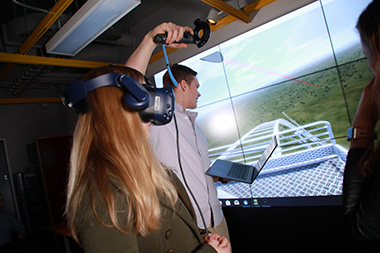
Kurbanovas ’17, ’18, custom built much of the lab’s equipment. He earned his bachelor’s and master’s degrees in computer science from the College of Engineering and Applied Sciences.
“I’ve spent a lot of time researching the software and hardware behind A.I. and machine learning. I believe our work systems are better than anything that could be reasonably bought,” said Kurbanovas. “The xCITE lab’s combination of atmospheric scientists and computer engineers is something unique.”
Interdisciplinary Partnerships
The xCITE lab is designed to be a multi-disciplinary collaboration space open to the UAlbany community, along with public and private partners.
Working with UAlbany's Center of Excellence in Weather & Climate Analytics, the xCITE lab’s current projects include a partnership with TruWeather Solutions to build machine learning weather prediction models for UAV (drone) operators, a collaboration with Consolidated Edison Company of New York (Con Ed) on a dashboard for the Wind Extremes Forecast System (WEFS), and a partnership with the NYS Mesonet to develop a mobile app that displays weather conditions across the state, now available on Apple and Google Play stores.
Several graduate students are also working with xCITE, including Vanessa Przybylo, a Ph.D. research assistant at ASRC who is working with the lab to visualize ice crystal aggregation (the process by which two or more ice particles attach to each other).
“My research focuses on how snow gets started in the clouds, collects and then precipitates out,” Przybylo said. “Through the xCITE Lab, I have been able to create visualizations of 3D rotating ice crystals. The cutting-edge projects happening here are really innovative. There’s nothing else like it.”





